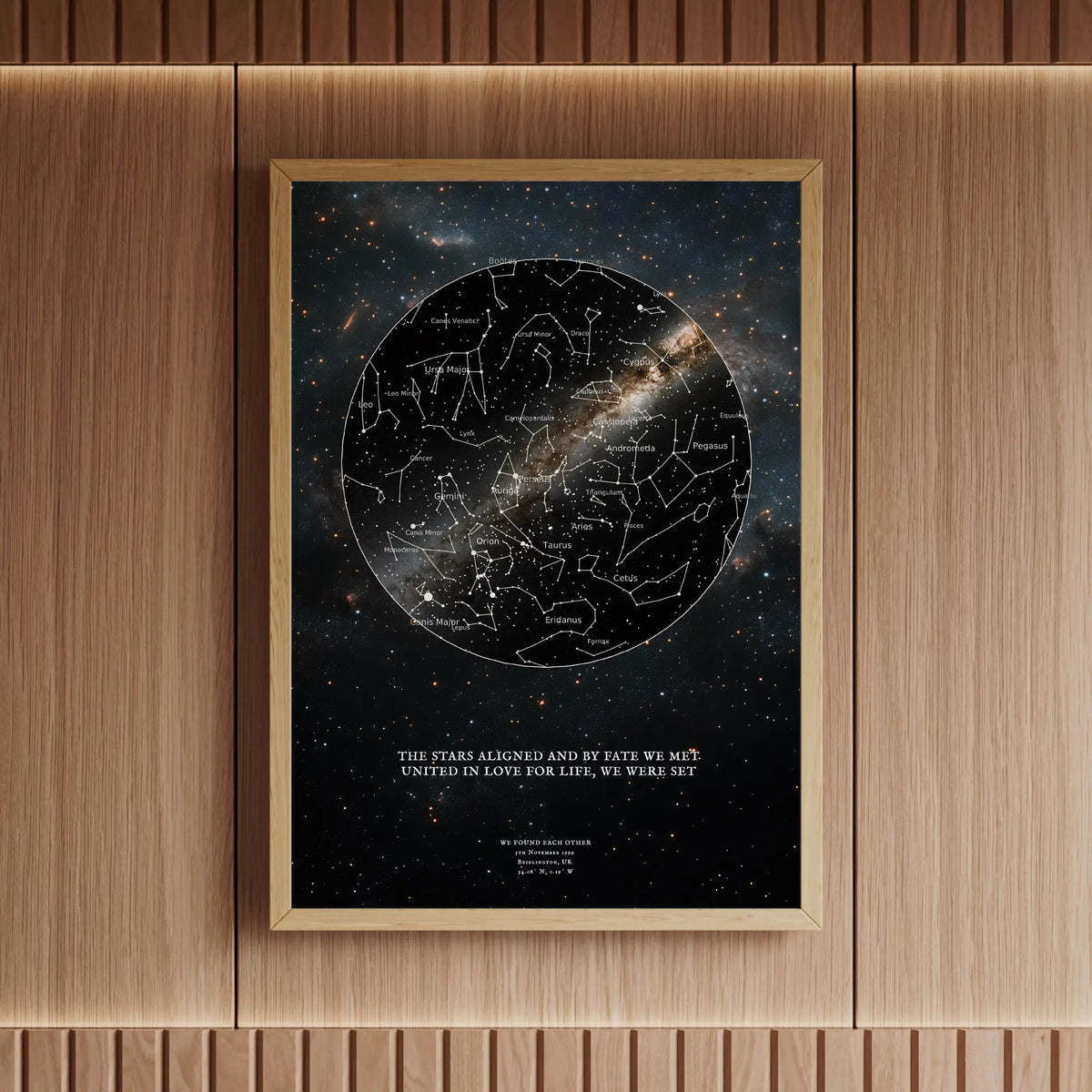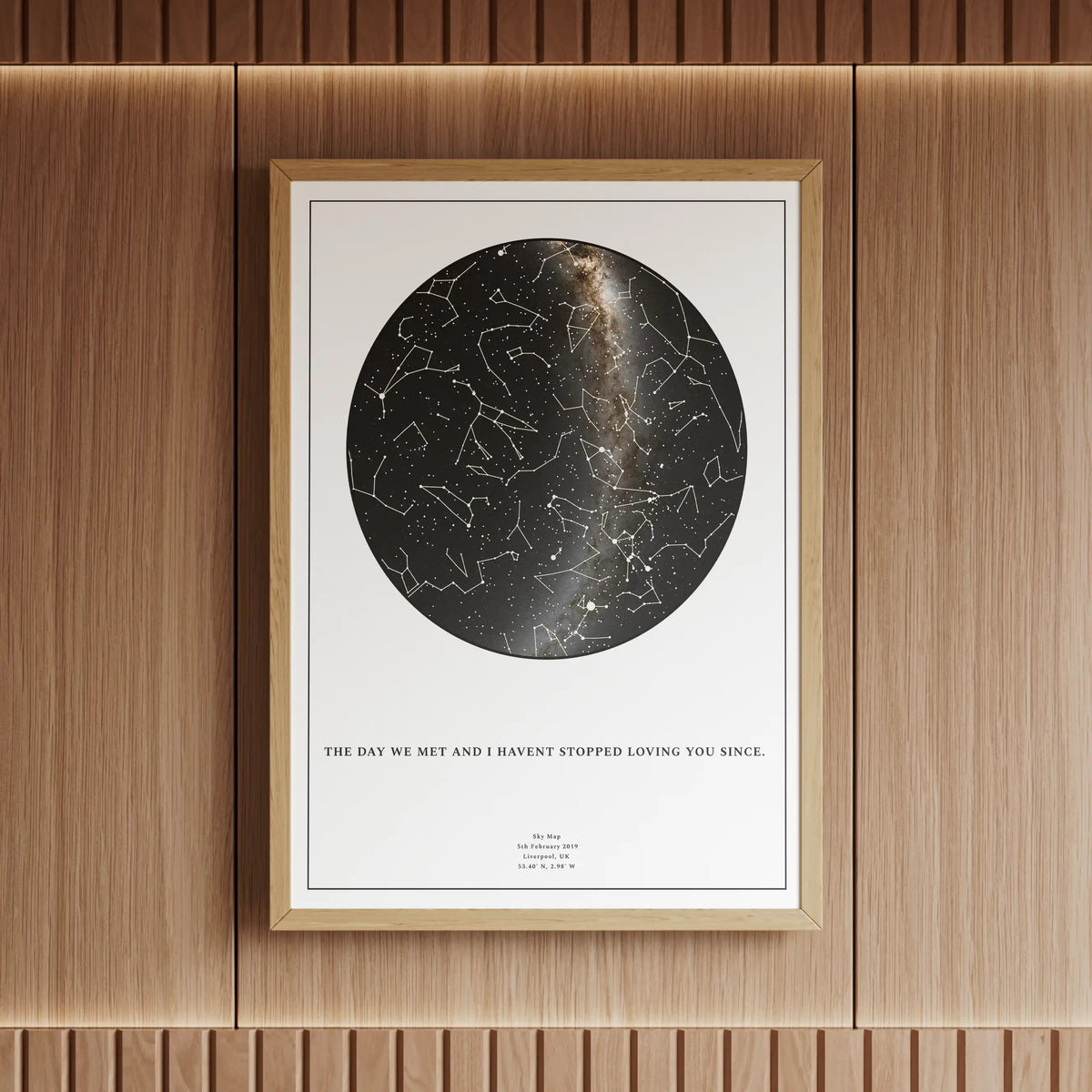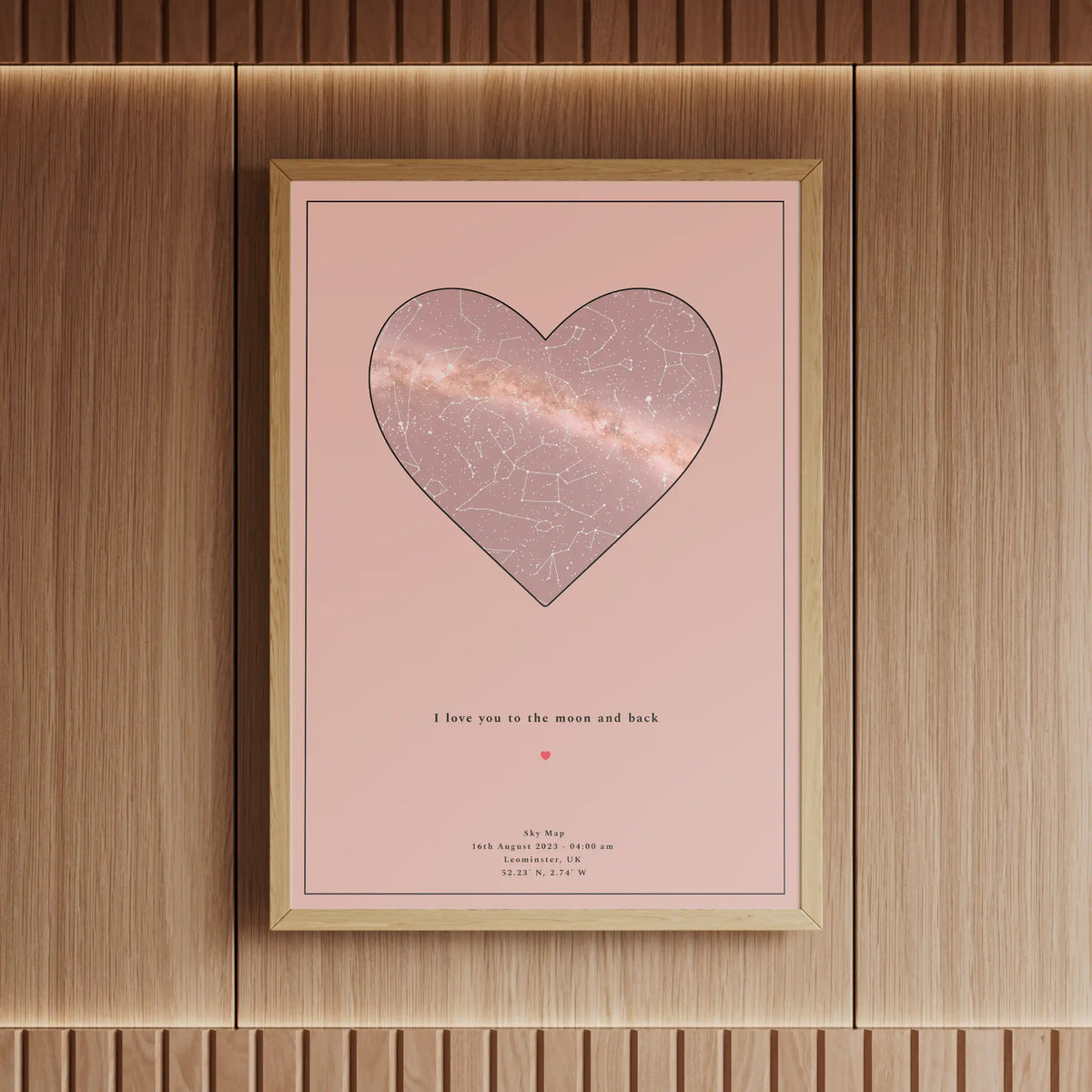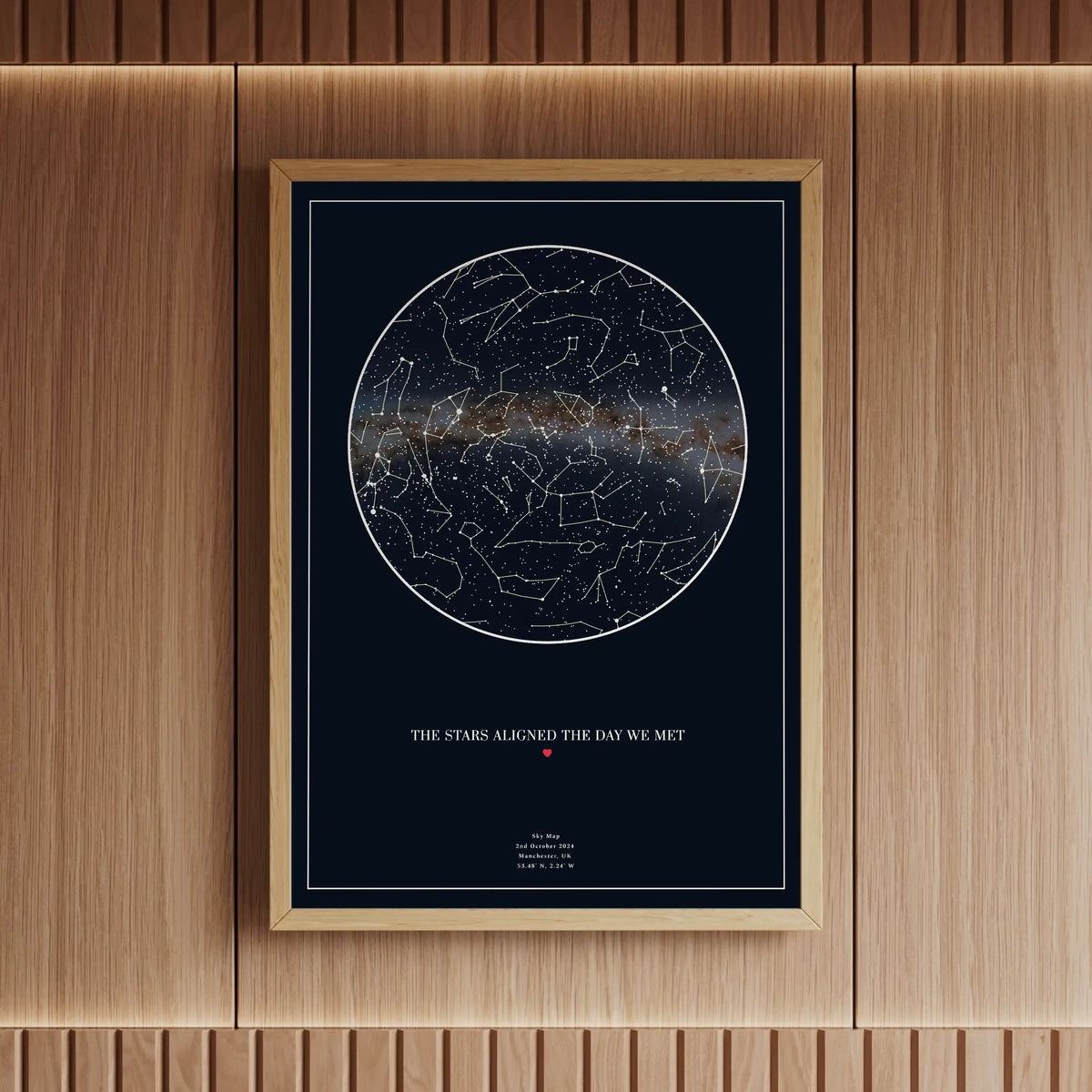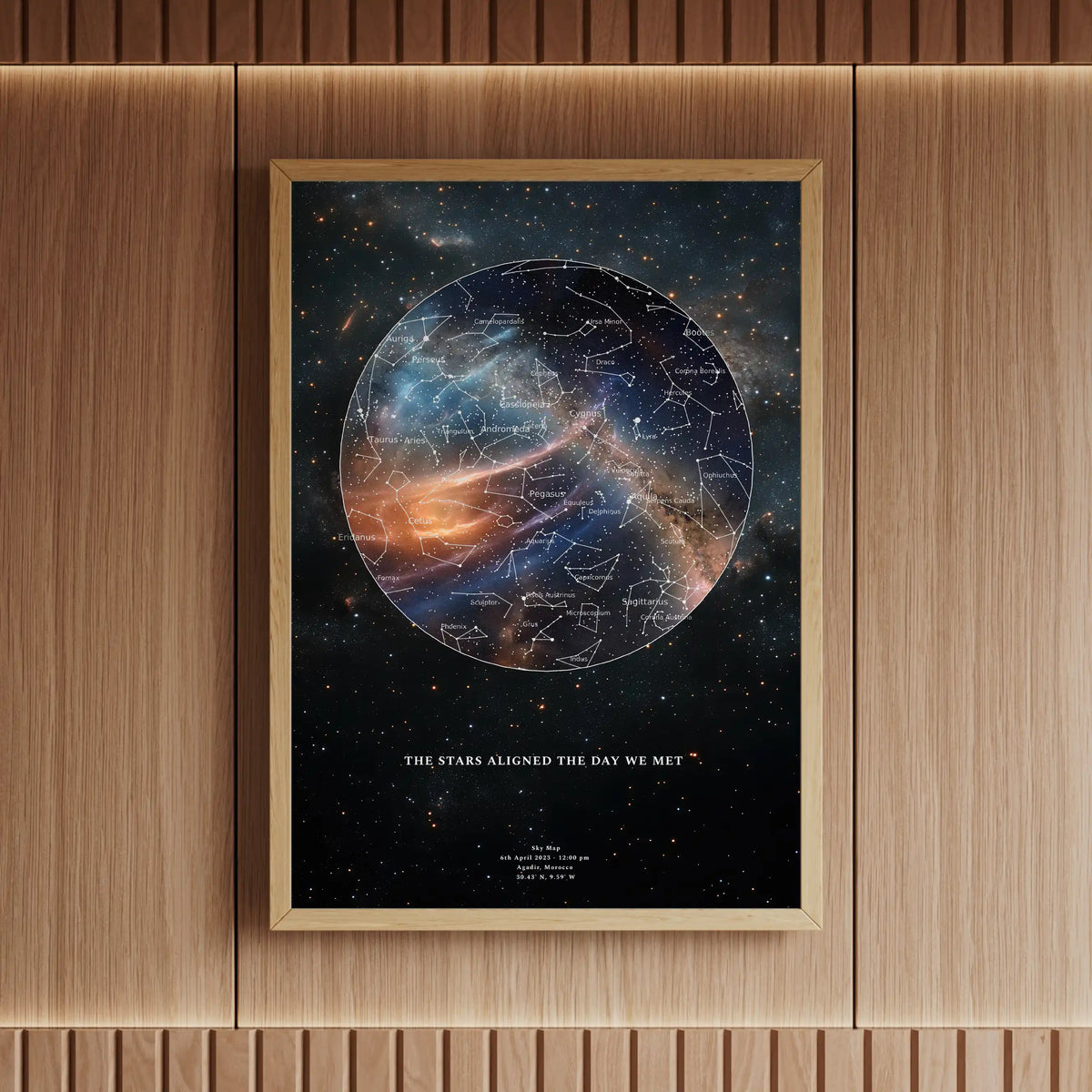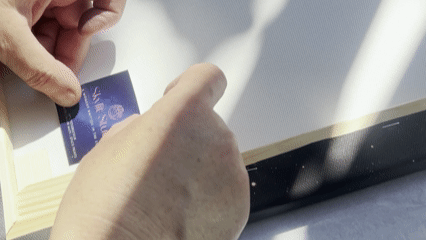- TWA 7b: JWST’s Lightest Imaged Exoplanet
- What Is TWA 7b?
- Imaging Challenges & Triumphs
- The Debris Disk & “Shepherd” Planets
- Chandra’s X‑Ray Insights on Habitability
- How X‑Ray Flares Erode Atmospheres
- Refining Exoplanet Habitability
- WASP‑121b’s Unexpected Molecular Makeup
- Thermal Inversions & Silicate Clouds
- Implications for Planet Formation Theories
- A Skylit Studio Reflection
- Order Your Personalised Star & Exoplanet Map
- Related Skylit Blog Posts
- Explore Our Astro Photography Prints
- Conclusion
- Sources
TWA 7b: JWST’s Lightest Imaged Exoplanet
Ever dreamed of spotting a planet that’s lighter than Saturn beyond our Solar System? Thanks to the James Webb Space Telescope (JWST), we now have TWA 7b – the lightest exoplanet ever directly imaged at only 0.3 times Jupiter’s mass. Nestled in a young star system about 110 light‑years away, TWA 7b dances within a spectacular debris disk, shedding new light on how planets carve out dusty rings. This discovery pushes JWST’s sensitivity to its limits and teases the possibility of imaging even smaller, rocky worlds soon. 🌌

What Is TWA 7b?
TWA 7b orbits the TWA 7 star, itself a mere 16 million years old. Unlike gas giants we’ve seen before, it’s Saturn‑mass yet still flaunts a clear silhouette against the infrared glow captured by JWST’s MIRI instrument. Ground‑based telescopes like the VLT confirmed its gentle tug on stellar light, cementing its status in exoplanet lore.
Imaging Challenges & Triumphs
Imaging exoplanets is like trying to photograph a firefly beside a searchlight. JWST’s mid‑infrared capabilities and coronagraph masked out TWA 7’s stellar glare, revealing the faint planet. It’s a testament to meticulous planning and advanced optics – and hints at future triumphs in capturing Earth‑sized worlds!
The Debris Disk & “Shepherd” Planets
TWA 7b sits in the inner ring of its star’s dusty disk. The disk’s concentric gaps suggest “shepherd” planets sculpting dust lanes – much like how Saturn’s moons shape its rings. It’s an exoplanet analogue you can almost see in an unforgettable JWST image.
Chandra’s X‑Ray Insights on Habitability
Not all exoplanets are created equal when it comes to habitability. NASA’s Chandra X‑ray Observatory has shone a spotlight on how high‑energy radiation from host stars strips away planetary atmospheres. By charting X‑ray flux from dozens of star–planet systems, researchers are rewriting the rulebook on where life might thrive.
How X‑Ray Flares Erode Atmospheres
Intense X‑ray flares blast exoplanet atmospheres with ionising radiation, heating gas to escape velocity. Over millions of years, even a Neptune‑like world can dwindle to a barren core. Chandra’s long‑term monitoring shows which stars calm their fury and which are cosmic bullies – crucial intel for hunting habitable zones.
Refining Exoplanet Habitability
Traditional “Goldilocks” zones focus on liquid water—but Chandra adds an X‑ray dimension. Now, we favour stars with tempered X‑ray output, ensuring planets can keep their atmospheres intact. It’s a game‑changer in targeting worlds for future telescopes or even interstellar probes.
“Chandra’s X‑ray eye teaches us that some stars are kinder to atmospheres than others – a vital lesson in our search for life.”
WASP‑121b’s Unexpected Molecular Makeup
Ultra‑hot Jupiter WASP‑121b has captured headlines again, this time for its exotic atmosphere. JWST detected silicon monoxide (SiO), water vapour (H₂O), carbon monoxide (CO) and even tiny traces of methane (CH₄) on its nightside—clues to a bizarre “rock‑vapor” world.
Thermal Inversions & Silicate Clouds
SiO detection hints at a thermal inversion layer where temperatures spike with altitude. Imagine a cloud deck of silicate and metal vapour instead of water – a sky glowing with molten rock! This exotic chemistry reshapes models of heat transfer in extreme atmospheres.
Implications for Planet Formation Theories
Discoveries like WASP‑121b force us to rethink how heavy elements end up in gas giants. Are they born with these compositions or accrete material later? Each molecule JWST spots is a breadcrumb in the story of planetary evolution.
A Skylit Studio Reflection
Every map we craft at Skylit Studio tells a deeply personal story. From marking the exact night sky when you first met your partner, to commemorating the moment your little one was born under a full Moon—our Star and Moon maps become keepsakes of life’s most treasured memories. Each print is more than art; it’s a snapshot of your own universe. Whether it’s the constellation you gazed upon during a proposal, or the lunar phase that watched over a graduation celebration, our maps celebrate the moments that matter to you.
Design Your Star MapOrder Your Stars
Want to bring these discoveries home? Our prints start unframed from £21.99, or choose engineered wood framing in Classic Black, Elegant White or Natural Wood Brown—sizes A4 up to 60×80 cm. Finish with a ribbon gift wrap and free gift note at our gift-wrapping page. 🚀
Related Skylit Blog Posts
- What Are IAU Constellations vs Zodiac Signs?
- 7 Tips to Create the Best Personalised Star Map
- Why a Star Map Is the Perfect Gift for Mindfulness
Explore Our Astro Photography Prints
Conclusion
From TWA 7b’s gentle glow in a dusty ring to Chandra’s X‑ray reckoning and WASP‑121b’s scorching chemistry, exoplanet science is blossoming. Each new discovery refines our quest for habitable worlds and informs our cosmic art. So, whether you’re mapping the Milky Way or gifting a Moon‑phase print, remember: the universe is full of surprises—and your Skylit map is the perfect canvas to celebrate them. 🌠

